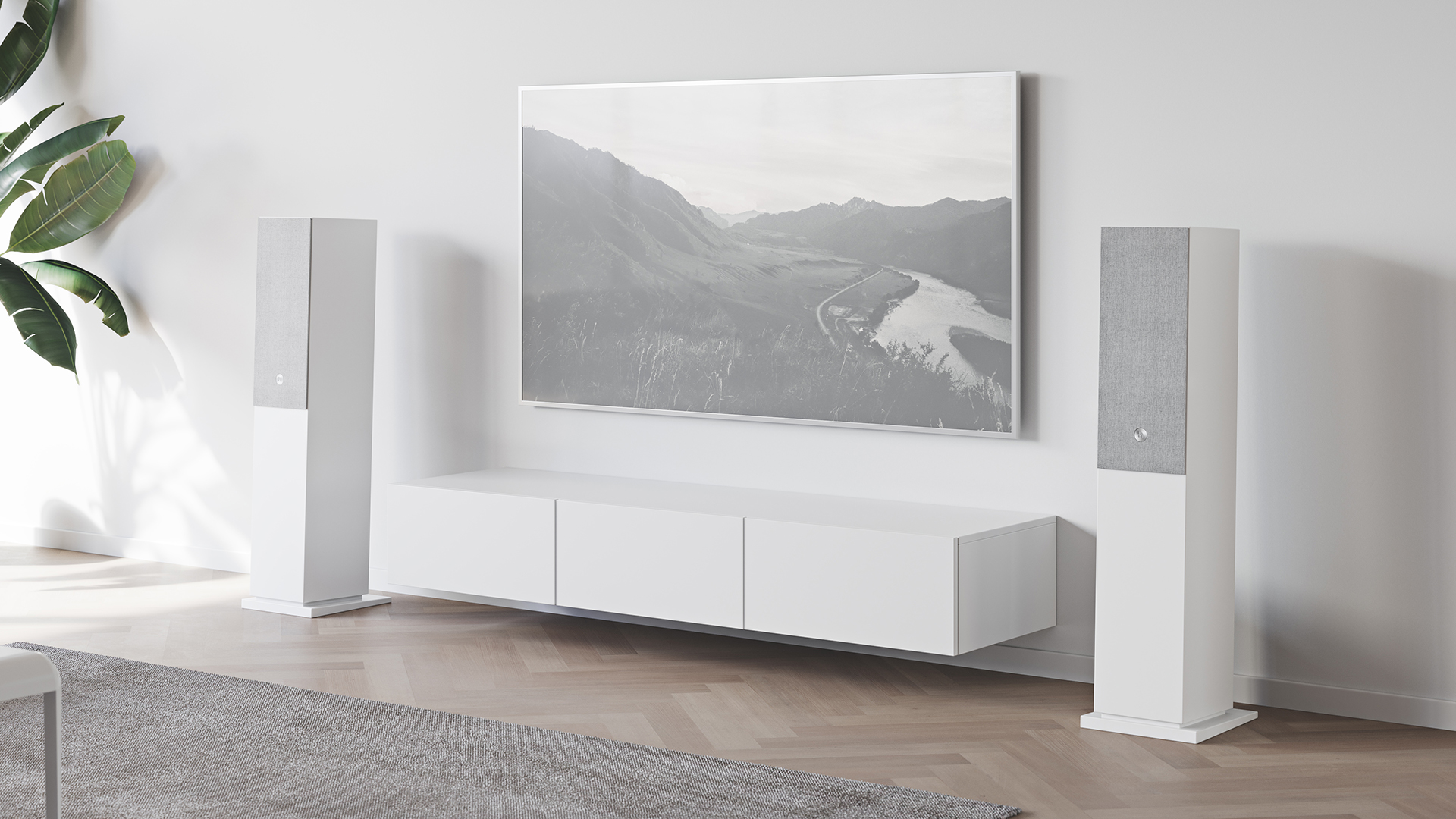Audio Pro's new speakers promise a big, easy TV audio upgrade for soundbar haters
Wireless speakers with an HDMI port for your TV sound

Audio Pro has just announced its latest set of wireless speakers, and they're aimed straight at giving your TV a huge sound upgrade just as much as your music. The Audio Pro A48 floorstanding speakers feature an HDMI ARC port for direct connection to your TV, as well as Apple AirPlay 2 and Google Cast. Oh, and you can wire in sound from audio gear too – that's still a thing with speakers, just about.
The Audio Pro A48 is available from mid-September, and will cost $1,200 / £1,200. They're the latest in the line-up of would-be "soundbar killer" (their words) speakers from the company, with the much cheaper A28 bookshelf speakers and the A38 smaller floorstanding speakers rounding out the range, all offering the same connectivity, just at different levels of punch.
Speaking of punch, the A48 speakers are a three-way design, meaning they should deliver a big, powerful sound with great dynamic range, based on our experience with Audio Pro gear. They're very much targeted at being an alternative to one of the best soundbars at the high end – this is the kind of money you'd pay for a Sonos Arc with a subwoofer, or for a Sony HT-A7000 – for people who don't like the idea of a soundbar.
All physical connections (power, HDMI, any other audio connections) go into the left speaker, and the right speaker connects to it with a single cable that carries everything it needs.
They're active speakers, which means they have all the amplification they need in already, so you can just connect one of the best turntables directly (as long as it has a built-in phono stage).
They're available in black or white, with optional grilles on the front – and you can customize the grilles if you want to add more of your own touch.

Analysis: What's wrong with a soundbar?
Soundbars are one of the most popular products on the planet right now, for a few reasons – partly because lots of people upgraded their TVs in the last couple of years because a lot more time was suddenly spent at home in the 2020/2021 period for some reason and are now looking for a matching sound upgrade; partly the because Dolby Atmos has become such a buzzword for home theater and the best Dolby Atmos soundbars have become more and more affordable; and partly because of their convenience, in that they just sit on your current TV stand and don't take up much more of your life.
Get daily insight, inspiration and deals in your inbox
Sign up for breaking news, reviews, opinion, top tech deals, and more.
But not everyone is happy with how soundbars work. Soundbars are small, and that means they have certain physical limitations on what kind of sound they can offer, especially when it comes to sheer scale and power. Smaller drivers and less volume within the cabinet means less air gets moved. High-end 'bars get around this by just packing themselves with multiple drivers, which also helps create the multi-direction 3D effect of Dolby Atmos – but this often makes them weaker for sound.
We at TechRadar truly love a great Dolby Atmos soundbar with positional audio tricks, but some people just don't want that – they're happy with having stereo sound, but stereo sound that's as good as it can be, with serious speaker engineering that works as well for music as it does for movies.
We've seen growing interest in this in the last few years as soundbars have started getting people thinking about TV audio more, and many of the best stereo speakers have started including HDMI connectivity too – and we've written about what speakers can do better than Dolby Atmos soundbars.
Soundbars are still perfect for most people, but more competition is never a bad thing, and maybe speakers like this will push soundbars to up their music game even more.

Matt is TechRadar's Managing Editor for Entertainment, meaning he's in charge of persuading our team of writers and reviewers to watch the latest TV shows and movies on gorgeous TVs and listen to fantastic speakers and headphones. It's a tough task, as you can imagine. Matt has over a decade of experience in tech publishing, and previously ran the TV & audio coverage for our colleagues at T3.com, and before that he edited T3 magazine. During his career, he's also contributed to places as varied as Creative Bloq, PC Gamer, PetsRadar, MacLife, and Edge. TV and movie nerdism is his speciality, and he goes to the cinema three times a week. He's always happy to explain the virtues of Dolby Vision over a drink, but he might need to use props, like he's explaining the offside rule.